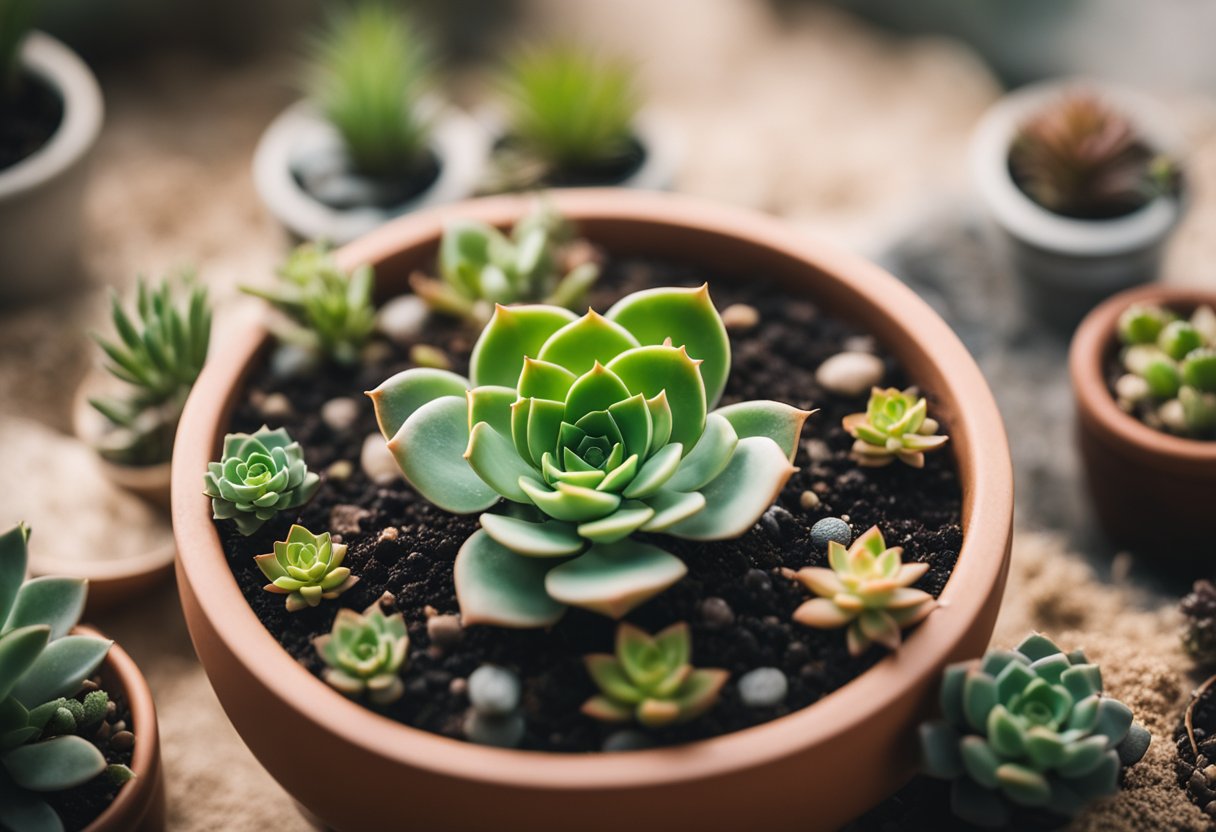Succulent Soil Mix for Healthy Growth
Succulents need special soil to thrive. Regular potting soil holds too much water and can cause root rot.
The best soil for succulents is well-draining, sandy, and low in organic matter.
You can easily make your own succulent soil mix at home.
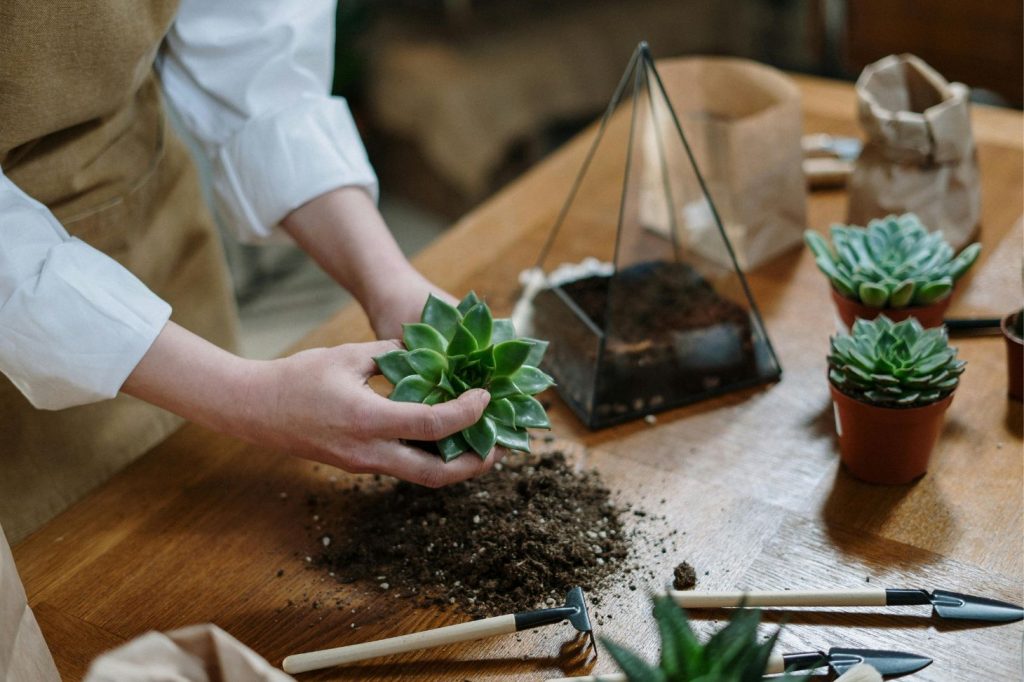
A good succulent soil recipe uses three main ingredients: potting soil, coarse sand, and perlite. This mix allows water to drain quickly while still providing nutrients. It also keeps roots from staying wet for too long.
You can adjust the ratios to suit different types of succulents.
Plants that like drier conditions need more coarse sand and perlite. Those that prefer more moisture can benefit from a well-draining potting mix that retains moisture without becoming waterlogged.
Making your own mix lets you customize it for your plants’ needs.
Understanding Succulents and Their Soil Needs
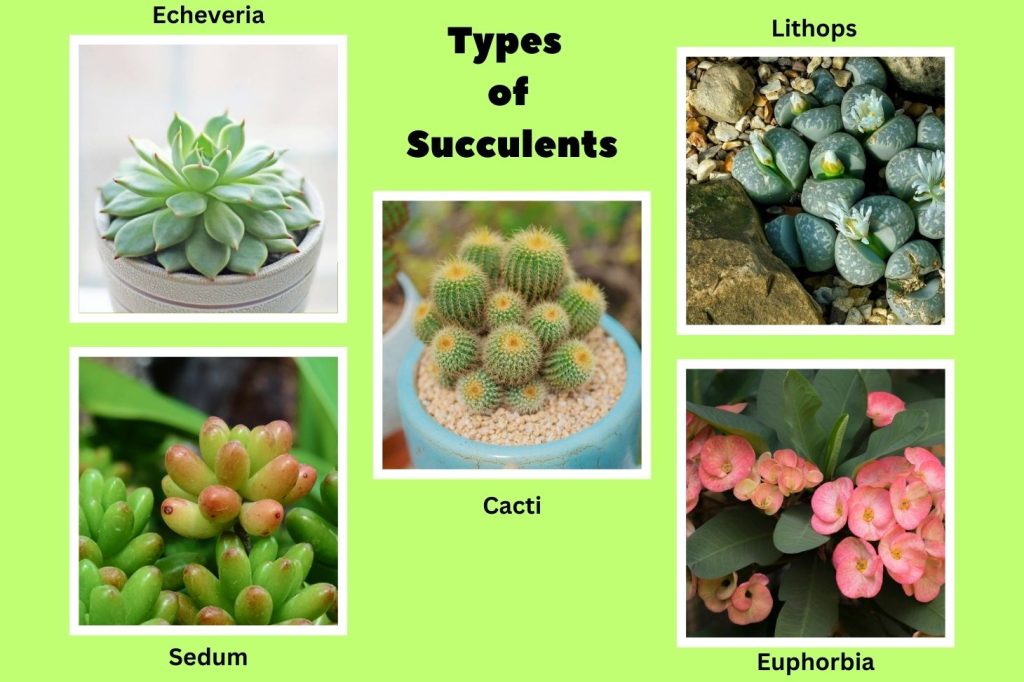
Succulents have special needs when it comes to soil. Their unique traits require a specific growing environment to stay healthy and thrive.
The Unique Nature of Succulents
Succulents are plants that store water in their leaves, stems, or roots. This helps them survive in dry climates.
Their ability to hold water means they can’t handle too much moisture around their roots.
Succulents have shallow root systems that spread out near the soil surface. These roots are great at soaking up water quickly when it’s available. But they can rot if left in wet soil for too long.
Many succulents come from desert areas. They’ve adapted to harsh conditions with little water and poor soil. In your garden, they need similar conditions to stay happy and healthy.
Essential Soil Characteristics for Healthy Growth

Good succulent soil drains water fast. This keeps the roots from sitting in water and rotting. The soil should feel gritty and loose when you touch it.
A mix of organic matter and inorganic materials works best for succulents.
Organic matter feeds the plants. Inorganic materials like coarse sand or perlite help with drainage.
The ideal pH for succulent soil is slightly acidic to neutral (6.0 to 7.0). This range helps plants take up nutrients from the soil.
Succulent soil doesn’t need to be rich in nutrients. Too much fertilizer can actually harm these plants. A light, well-draining mix is more important than one packed with plant food.
Components of an Ideal Succulent Soil Mix
A great succulent soil mix balances drainage and water retention. It uses both organic and inorganic materials to create the perfect growing environment for your plants.
Organic vs Inorganic Matter
Organic matter helps retain some moisture and provides nutrients. Good organic options include:
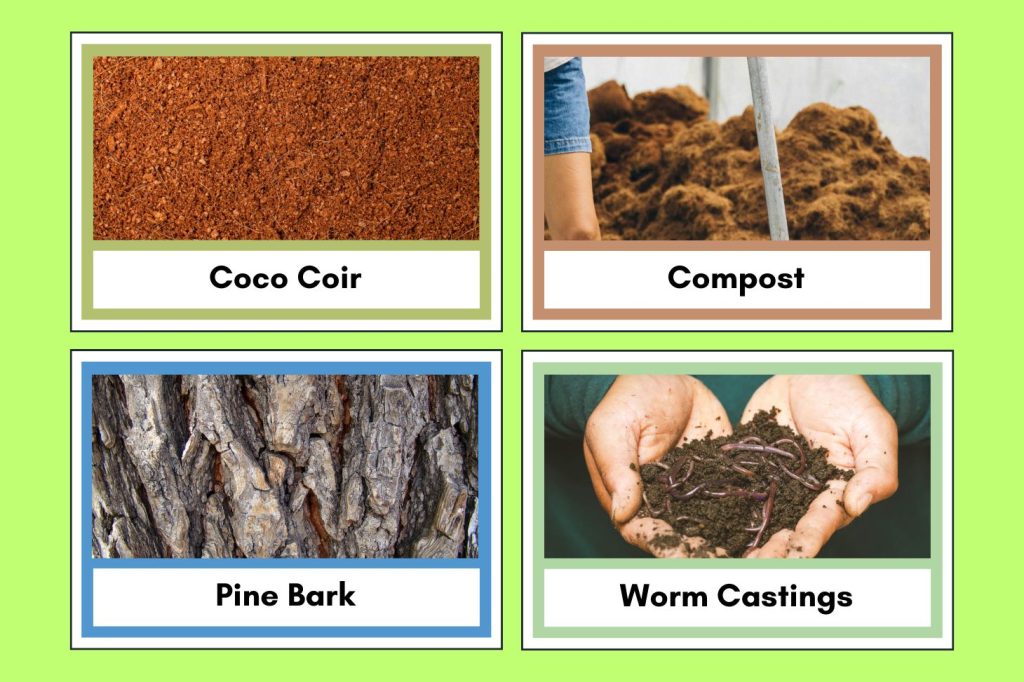
- Coconut coir: Made from coconut husks, it holds water while allowing drainage
- Compost: Adds nutrients and improves soil structure
- Pine bark: Creates air pockets and breaks down slowly
- Worm castings: Provide gentle, slow-release nutrients
Inorganic matter improves drainage and prevents soil compaction. Key inorganic ingredients are:
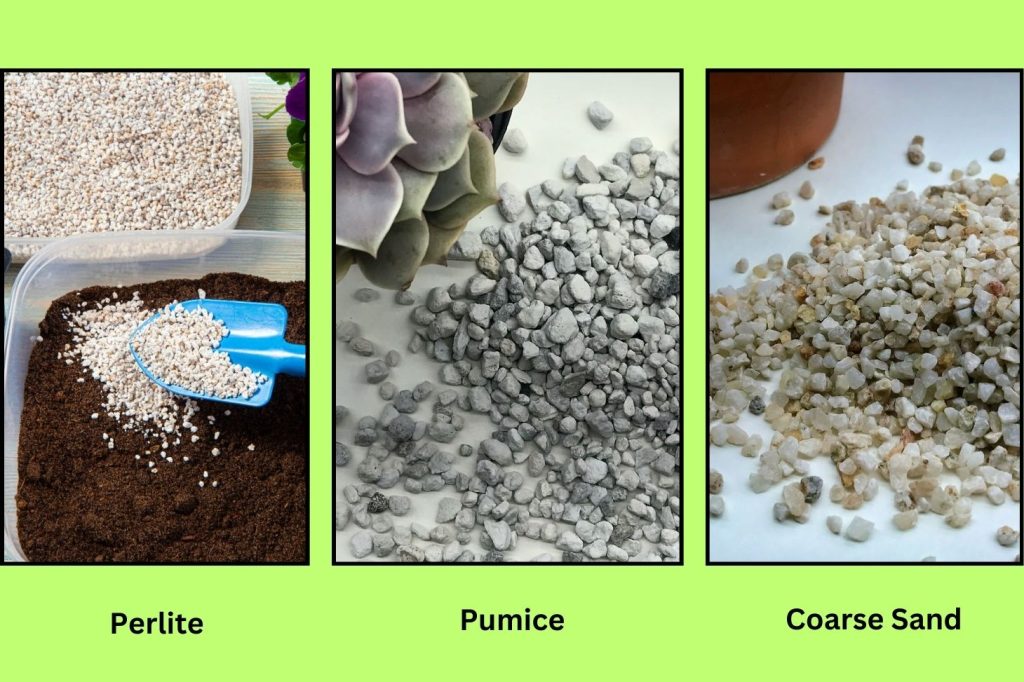
- Perlite: Light, porous volcanic glass that increases aeration
- Pumice: Volcanic rock that aids drainage and provides minerals
- Coarse Sand: Improves drainage and soil texture
A good mix uses about 50-70% inorganic and 30-50% organic materials.
Amendments and Their Roles
Soil amendments fine-tune your mix for optimal succulent growth. Some useful additions are:
- Perlite: Lightens soil and boosts drainage
- Coarse Sand: Improves soil texture and water flow
- Pumice: Enhances aeration and provides minerals
- Coconut coir: Retains some moisture without getting soggy
When choosing amendments, think about your climate and watering habits.
In humid areas, use more inorganic matter for better drainage. In dry climates, you can add a bit more organic material to hold moisture longer.
Mix amendments thoroughly into your base soil. Start with small amounts and adjust as needed. Your goal is a loose, well-draining mix that still holds some water for your succulents’ needs.
Comparing Commercial and DIY Succulent Soils
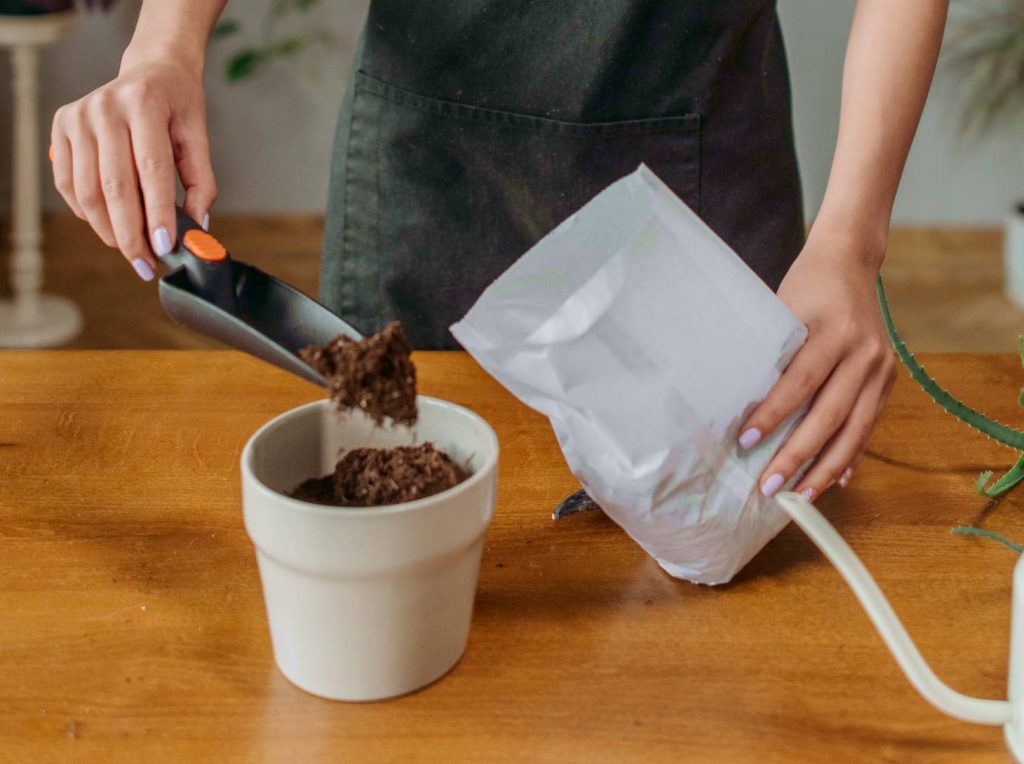
Commercial succulent soils and homemade mixes both have their place in growing healthy plants. The choice depends on your needs, time, and resources.
Pros and Cons of Commercial Mixes
Commercial succulent soils are ready to use right out of the bag. They often contain a mix of ingredients like peat moss, perlite, and coarse sand. These mixes are great for beginners or those with little time.
Some brands offer organic options with added nutrients. This can give your plants a boost.
But not all commercial mixes are the same. Some might hold too much water for certain succulents.
For easy succulent care, we recommend Spike and Bloom Succulent Blend. Our perfect blend ensures great drainage and healthy roots, preventing overwatering. It’s ready to use, saving you time and effort. Try and see the difference!
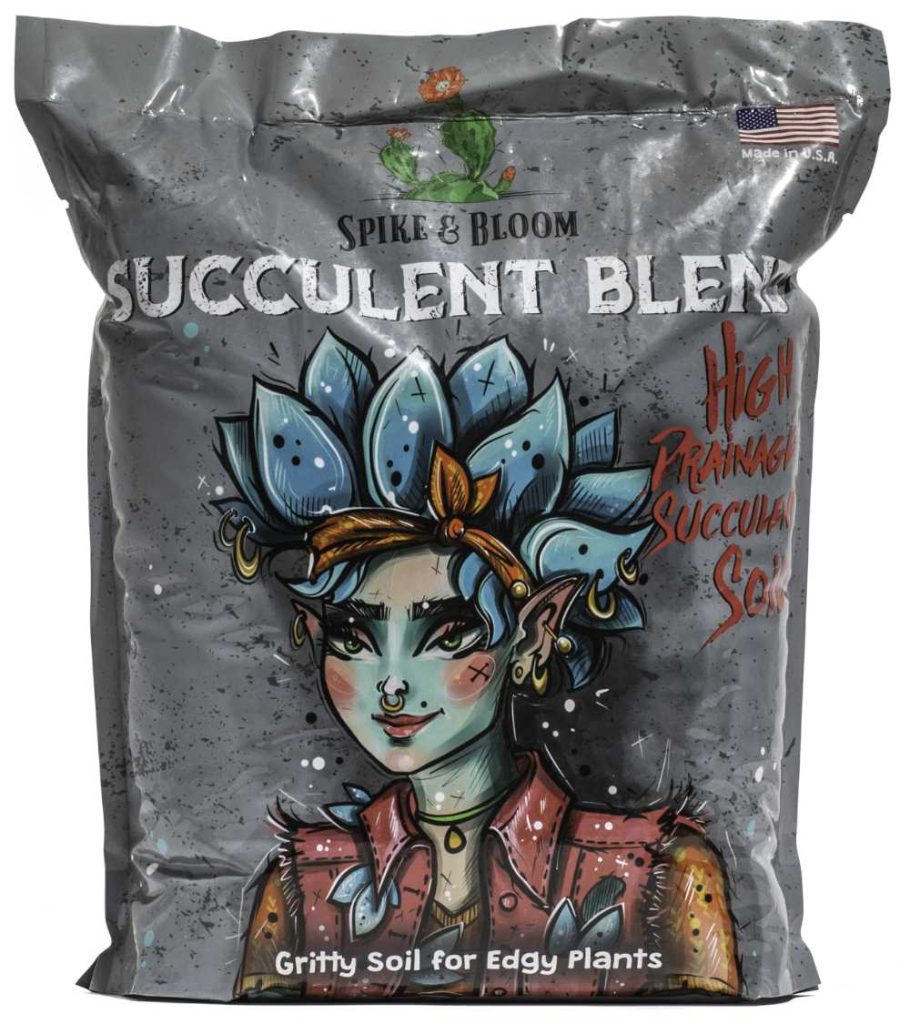
Creating Your Own Succulent Soil at Home
Making your own succulent soil lets you control what goes into the mix. A basic recipe uses regular potting soil, coarse sand, and perlite. You can adjust the ratios to suit different plants.
You can make a large batch and store it for future use.
To make your own mix, start with 3 parts potting soil. Add 2 parts coarse sand and 1 part perlite. Mix well. You can add small rocks or pumice for extra drainage.
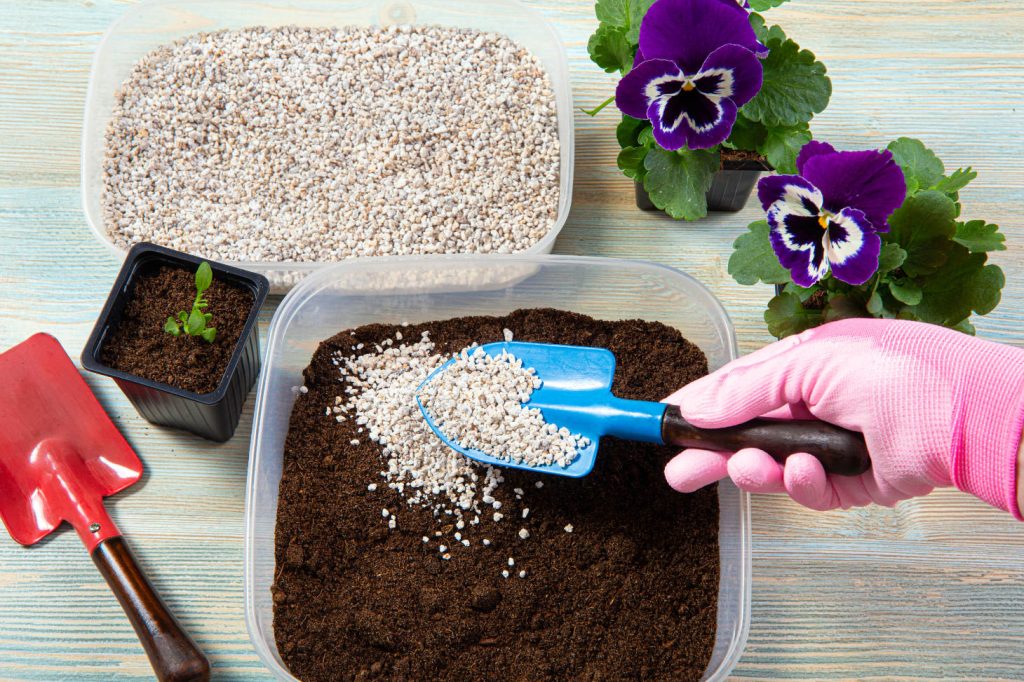
Homemade soil takes more time and effort. But it gives you full control over what your plants get. This is great for picky succulents or rare species.
Drainage: The Key to Preventing Root Rot
Good drainage is vital for succulent health. It stops water from sitting around roots and causing rot. Let’s look at how to improve drainage and spot problems.
Materials That Enhance Drainage
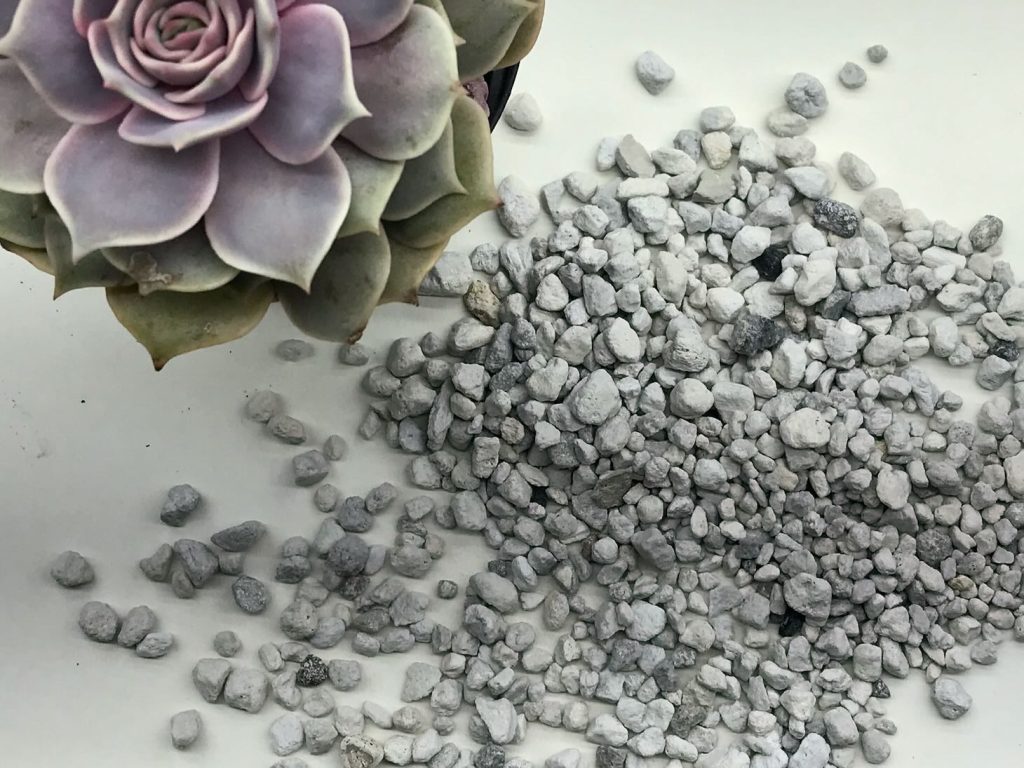
Sand is another top choice. It creates air pockets in the soil. This lets water move through quickly. Use coarse sand for best results.
Perlite is light and porous. It helps soil dry out faster. Mix it into your potting mix for better drainage.
Pumice rocks work well too. They hold some water but let excess drain away. This balance is perfect for succulents.
Signs of Poor Drainage and Solutions
Yellow leaves can mean too much water. Check if your soil is staying wet for days. If so, it’s time to improve drainage.
Mushy stems are a red flag. This often means root rot has set in. You’ll need to act fast to save your plant.
If water pools on top of the soil, drainage is poor. Mix in more coarse sand or perlite to fix this.
Mold on the soil surface is another sign. It shows the mix is too wet. Repot with a better-draining soil mix.
Slow growth can also point to drainage issues. Succulents need their roots to breathe. Good drainage helps this happen.
Water Management and Succulent Soil
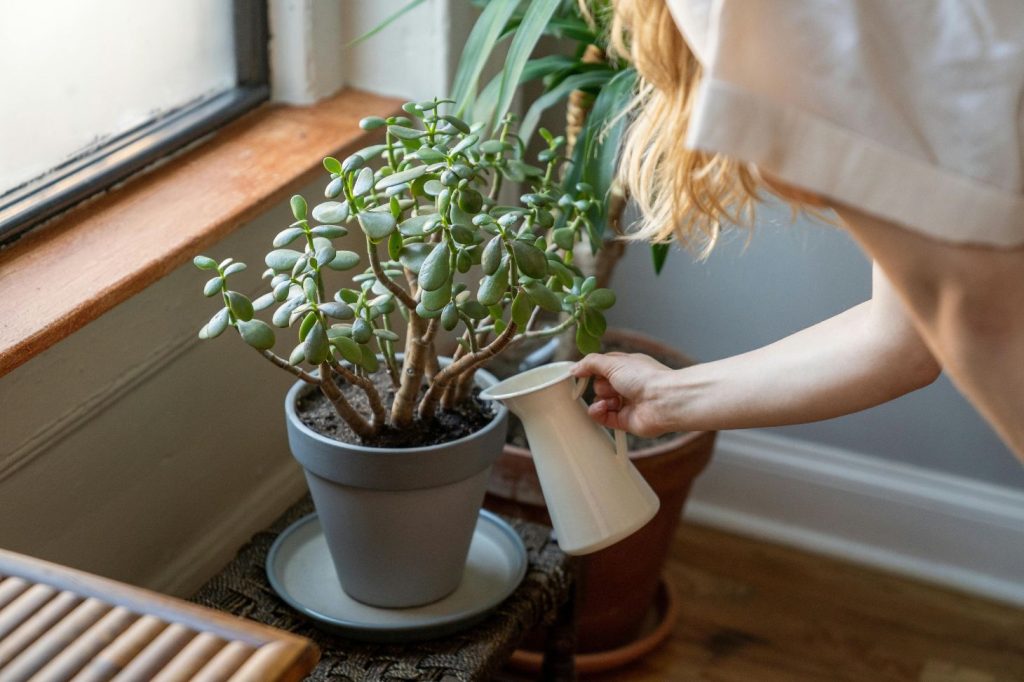
Proper water management is key for healthy succulents. Your soil mix plays a big role in how water moves through the growing medium and reaches plant roots.
Balancing Moisture and Dryness
Your succulent soil needs to strike a balance between moisture and dryness.
Use a mix with good drainage to avoid waterlogged roots. Add porous materials like pumice or perlite to improve air flow.
Don’t use soil with too much peat moss. It can hold water for too long. Aim for a mix that dries out 2-3 days after watering, depending on environmental conditions.
Check soil moisture before watering.
Stick your finger about an inch into the soil. Only water when it feels dry. This helps prevent overwatering.
Irrigation Techniques for Optimal Health
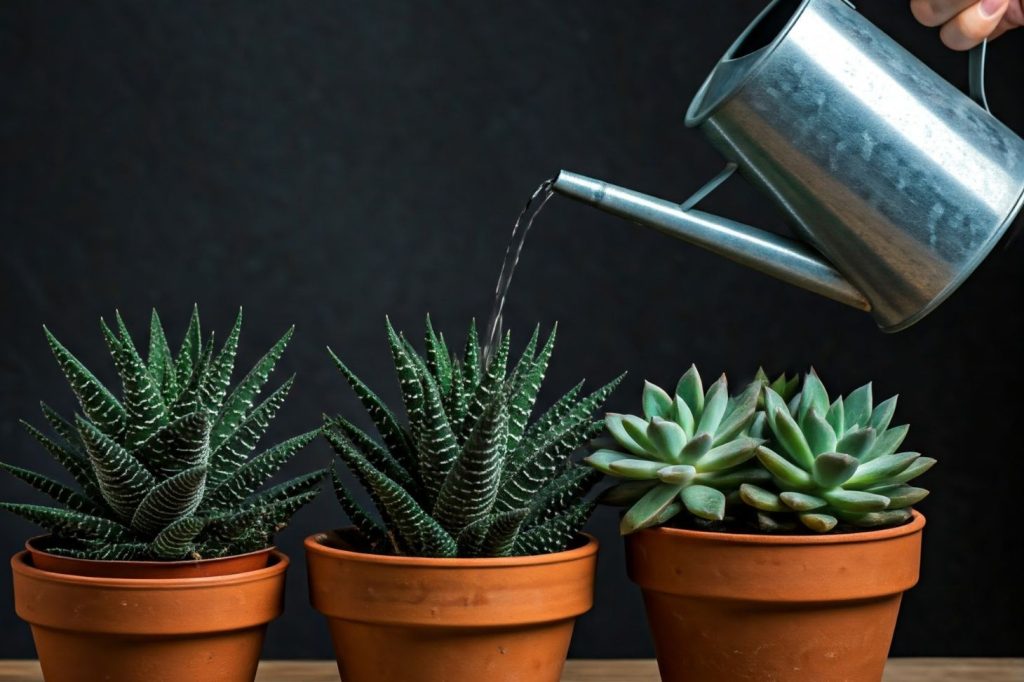
Water deeply but not too often.
Soak the soil until water runs out the pot’s drainage holes. This encourages strong root growth.
Let the soil dry out between waterings. Most succulents can go 1-2 months without water, depending on the species and environmental conditions. Adjust based on your climate and the season.
Water less in winter when plants are dormant. Increase frequency in summer during active growth.
Use pots with drainage holes. This lets excess water escape. Good drainage is vital for root health.
Avoid getting water on leaves. Water at the soil level instead. Wet leaves can lead to rot or sunburn.
The Role of Particle Size and Texture
Particle size and texture are key factors in creating the ideal soil for succulents. They affect how water moves through the soil and how much air reaches the roots.
Determining the Right Grit Size for Your Mix
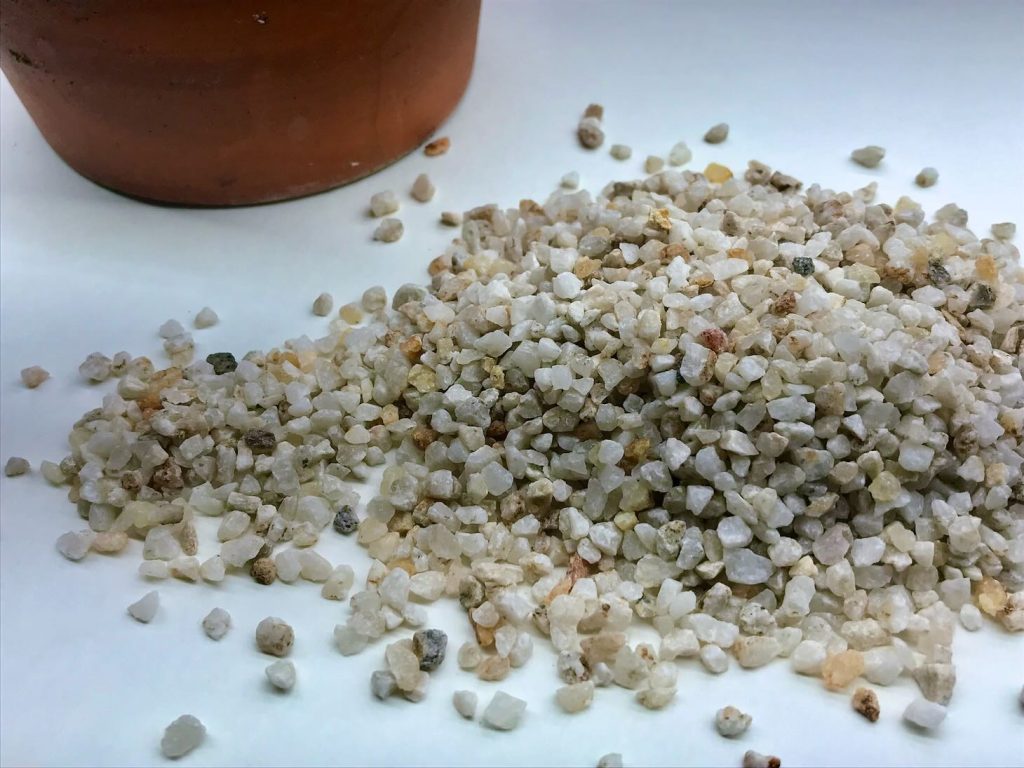
Coarse sand is a great choice for succulent soil. It has large particles that create spaces for air and water to flow.
Aim for coarse sand with particles about 1/8″ to 1/4″ in diameter. This grit size helps water drain quickly and prevents root rot.
A good rule of thumb is to use 3 parts potting soil, 2 parts coarse sand, and 1 part perlite or pumice.
For very dry climates, you might want a grittier mix. Try using up to 50% coarse materials like pumice or perlite. This will help your soil dry out faster between waterings.
The Impact of Texture on Root Health and Growth
Soil texture affects how easily roots can grow and access nutrients. A gritty texture with different particle sizes creates a loose, airy environment. This lets roots spread out and breathe.
Too much fine material can pack together tightly. This makes it hard for roots to push through the soil and also traps water, leading to root rot.
A mix of textures is best for succulents. It should feel gritty when you touch it, not smooth or sticky. This varied texture helps roots anchor themselves while still getting air and water.
Remember, succulents store water in their leaves and stems. They don’t need soil that holds onto moisture. A well-textured mix drains fast but still gives roots something to grip.
Soil pH and Nutrient Balance for Succulents
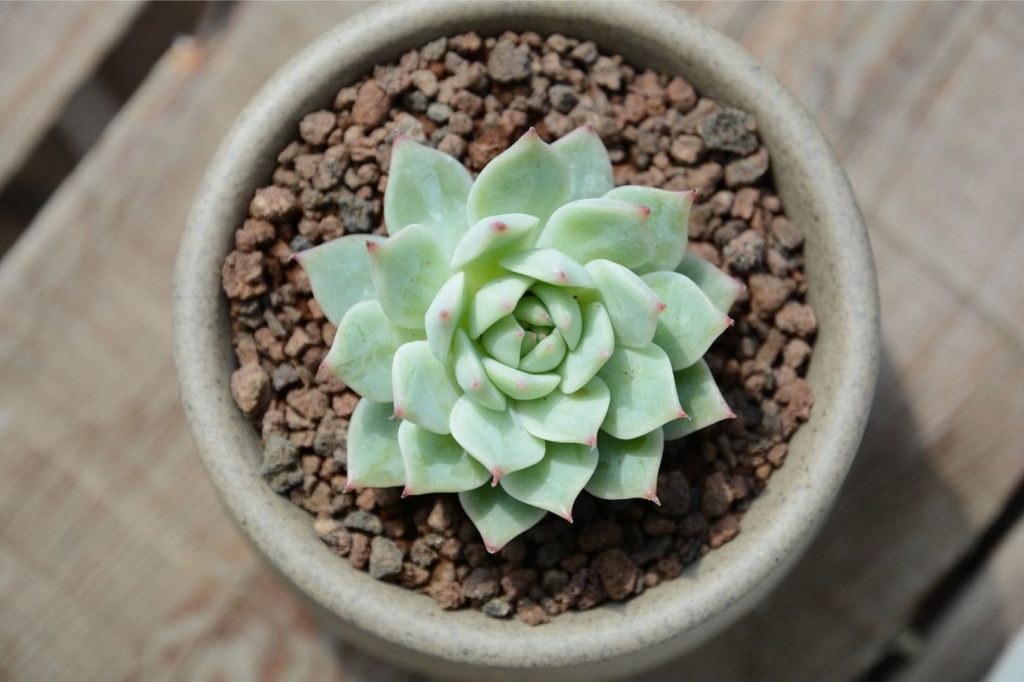
Soil pH plays a big role in how well succulents can absorb nutrients. The right pH helps succulents get what they need to grow strong and healthy.
Understanding Soil Acidity and Alkalinity
Soil pH ranges from 0 to 14, with a pH of 7 being neutral. Most succulents like soil with a pH between 6.0 and 7.0. This slightly acidic to neutral range is best for nutrient uptake.
If the soil is too acidic or alkaline, your succulents may have trouble getting nutrients. This can lead to yellow leaves, slow growth, or other problems. You can test your soil’s pH with a simple kit from a garden store.
Different nutrients are available at different pH levels. For example, iron is more available in acidic soils, while phosphorus is easier for plants to use in neutral soils.
Adjusting pH to Suit Specific Succulent Varieties
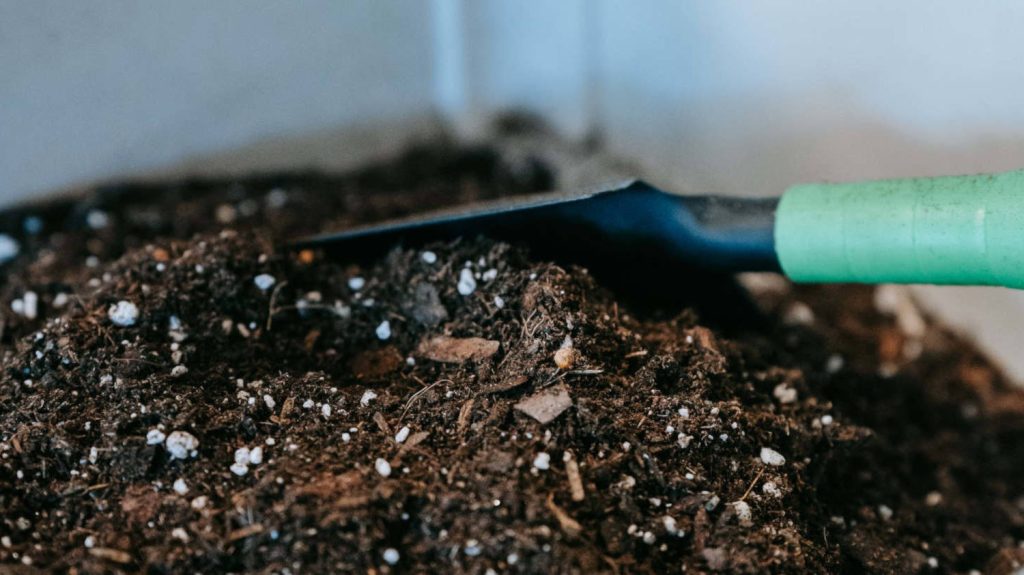
Most succulents prefer slightly acidic to neutral soil. You can change your soil’s pH to match what your plants need.
To make soil more acidic, add sulfur or peat moss.
To make soil more alkaline, add lime, use wood ash, or mix in crushed eggshells.
Start with small changes. Add a little at a time and retest after a few weeks. It’s easier to make small adjustments than to fix big swings in pH.
Remember that outdoor soil pH can change over time. Rain, fertilizers, and nearby plants can all affect it. Test your soil regularly to keep it in the right range for your succulents.
Sustainability and Environmental Considerations
Succulent soil choices can have a big impact on the planet. Picking the right materials helps conserve resources and protect nature. Let’s look at some eco-friendly options for your succulents.
Using Renewable Resources in Succulent Soil
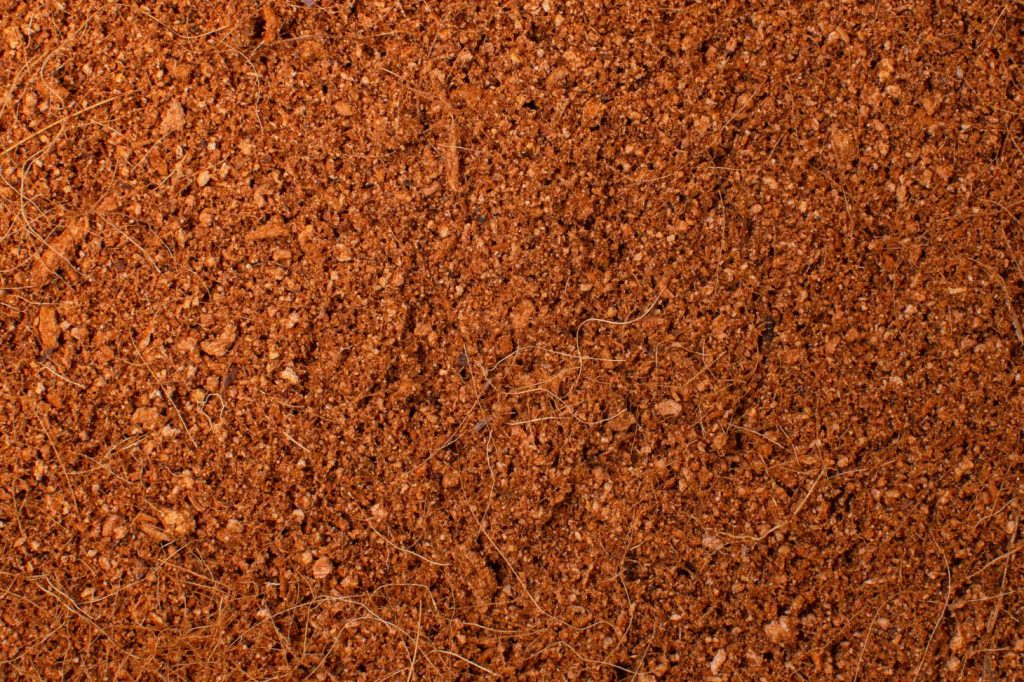
You can make your succulent soil more sustainable by using renewable ingredients. Coconut coir is a great choice, as it comes from coconut husks and regrows quickly. Peat moss is less eco-friendly because it takes a long time to renew.
This was an important consideration when we developed our high-drainage soil. We never felt too good about using peat moss and did a lot of soil research with alternative materials. It turns out, you can avoid peat moss altogether!
Pine bark is another good option. It’s a byproduct of the lumber industry, and using it in soil mixes keeps it out of landfills. You can also add composted leaves or yard waste to your mix. This recycles nutrients and reduces waste.
Impact of Growing Media on the Ecosystem
The soil you choose for your succulents affects more than just your plants. It can impact the wider environment too. Some soil ingredients can harm local ecosystems if they wash away.
Chemical fertilizers in soil mixes can pollute waterways, leading to algae blooms and harm aquatic life. You’re better off using organic fertilizers or compost in your mix. These release nutrients slowly and are less likely to cause problems.
Well-draining soil helps prevent water waste, which is good for the environment, especially in dry areas.
Choosing local materials for your soil mix can reduce transportation emissions, lowering the carbon footprint of your gardening hobby while also supporting your local economy.
Frequently Asked Questions
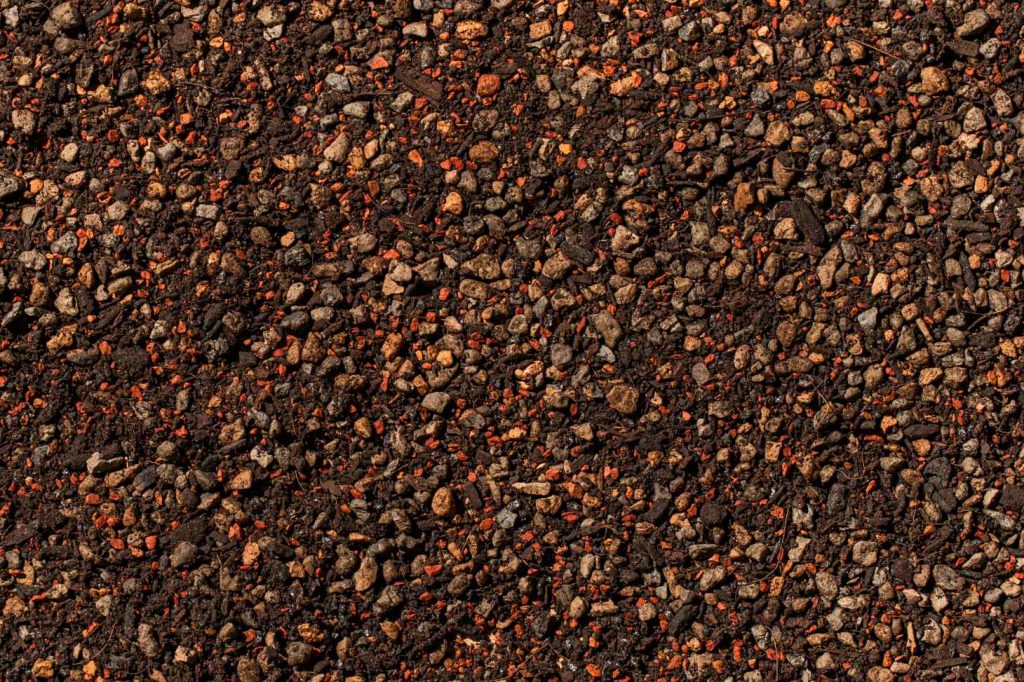
Succulent soil needs special care and ingredients. Here are answers to common questions about making the best soil mix for these unique plants.
What is the ideal mix ratio for succulent soil?
A good succulent soil mix is 3 parts potting soil, 2 parts coarse sand, and 1 part perlite or pumice. This mix gives the right balance of drainage and nutrients. You can adjust the ratio based on your climate and watering habits.
Can I use regular potting mix for my succulents?
Regular potting soil isn’t the best choice for succulents. It holds too much water and can cause root rot. If you must use it, mix in coarse sand and perlite to improve drainage. A special succulent mix is always better for these plants. Try Spike and Bloom Succulent Blend!
What are the key ingredients for making homemade succulent soil?
The main ingredients for succulent soil are:
- Coarse sand
- Potting soil
- Perlite or pumice
What are the characteristics of the best soil for succulents?
Good succulent soil is:
- Fast-draining
- Low in organic matter
- Gritty or coarse in texture
It should feel sandy and not hold water for long. When you squeeze it, it should crumble easily. The soil shouldn’t clump or stay wet for more than a day after watering.

